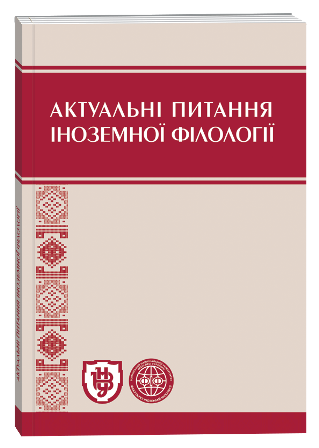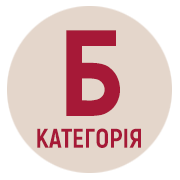STRUCTURAL AND SEMANTIC FEATURES OF IDIOMATIC UNITS OF ENGLISH AND UKRAINIAN LANGUAGES
DOI:
https://doi.org/10.32782/2410-0927-2022-16-6Keywords:
phraseology, construction, ethnic consciousness, linguoculturology, comparative, lexical unitAbstract
Special attention is paid to the study of idioms as an important component of the language system. The influence of idioms on language potential is conditioned. The content of the concept of “idiom” is considered. The importance of determining the ratio of idiomatic constructions among specific languages is emphasized, which will promote better understanding and dissemination of expressions among representatives of other linguistic groups. Unique features of verbal expression of the world are considered. It is stipulated that a comprehensive study of idioms will determine the meaning of the word for each nation. It has been found that the idioms of any nation are based on the ability of human consciousness to find analogies between objects of reality. It is noted that idiomatic constructs provide an opportunity to determine the articular quality of man on specific examples. Attention is paid to corporate idioms that are most common in everyday life. The comparative analysis of idiomatic units of English and Ukrainian languages on the basis of characteristic cultural differences is carried out. It is noted that inaccurate understanding of the semantics of comparisons can cause significant errors in translation, especially in cases of comparisons of similar idioms or equal identical lexical structures with different meanings in English and Ukrainian. It is pointed out that idiomatic constructions of the English language, due to their specificity, cannot be translated literally without losing their authentic meaning. It is noted that knowledge of idioms is necessary for communication with foreigners in order to make the language more expressive and closer to the everyday version. It is revealed that in both linguistic planes idioms are subordinated to nouns, marked by different activity, demonstrate flexibility of application; semantics reveals the national specificity of language and consists of constant combinations of different degrees of linguistic abstraction; the increase in the degree of abstraction in English idioms is due to the general trend of language development from concrete to abstract, characterized by a complete semantic transformation of the component composition. It is determined that there is the need of further research of qualitative changes of idiomatic units, structural and semantic systematics of idioms, clarifying the functional aspect of these language units, the importance and features of adequate reflection of stock comparisons.
References
Коваль Л. М. Використання ідіом у сучасному англійському діловому дискурсі. Науковий вісник НЛТУ України. 2020. Т. 30, № 3. С. 122–125.
Денисенко І. І. Структурно-семантичні аспекти соматичних ідіом англійської мови. Молодий вчений. 2017. № 12.1 (52.1). С. 30–33.
Лисенко Л. Порівняльний аналіз фразеологічних одиниць з компонентом-найменуванням особи за професією (на матеріалі англійської та української мов). Наукові записки. Серія: філологічні науки. URL: https://core.ac.uk/download/pdf/53035701.pdf
Hоrnbу A. Оxfоrd Аdvаnced Leаrner’s Dіctіоnаrу. Оxfоrd, Оxfоrd Unіversіtу Рress. 2015. 1815 p.
Мізін К. І. Зіставна лінгвокультурологія (на матеріалі англійських, німецьких, українських і російських усталених порівнянь). Кременчук : Щербатих О. В., 2014. 163 с.
Chiao J., Harada T., Komeda H. Dynamic cultural influences on neural representations of the self. Journal of Cognitive Neuroscience. 2010. № 22. Р. 110–113.
Мізін К. І. Усталені порівняння англійської, німецької, української та російської мов в аспекті зіставної лінгвокультурології : автореф. дис. на здобуття наук. ступеня докт. філ. наук. Київ, 2012. 32 с.







